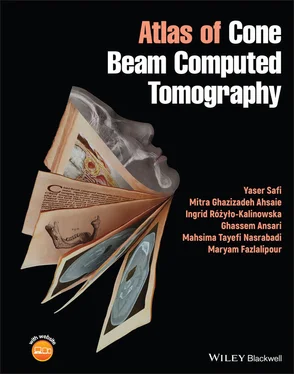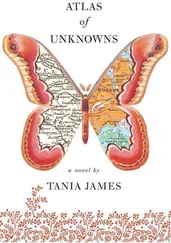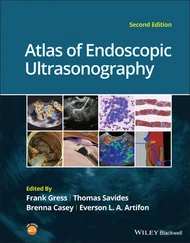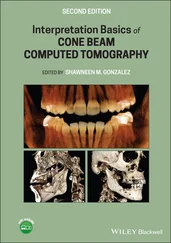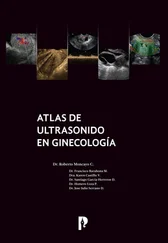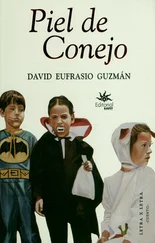1 Cover
2 Title Page
3 Copyright Page
4 Preface
5 About the Companion Website
6 1 CBCT Introduction 1.1 Science, Preparation, and Evaluation 1.2 Indications in Dentistry 1.3 Indications in Medicine
7 2 CBCT and Artifacts
8 3 Anatomic Landmarks 3.1 Normal Landmarks 3.2 Variations
9 4 CBCT of Dental Structures 4.1 Normal Anatomy and Anomalies 4.2 Difficulties of Eruption
10 5 CBCT of Congenital and Developmental Maxillofacial Anomalies
11 6 CBCT of Maxillofacial Trauma 6.1 Dental Fracture 6.2 Dento‐Alveolar Fracture 6.3 Bone Fractures
12 7 CBCT and Soft Tissue Calcifications and Ossifications
13 8 CBCT of Foreign Bodies
14 9 CBCT in Endodontics, Periodontics, and Orthodontics 9.1 Endodontics 9.2 Periodontics 9.3 Orthodontics
15 10 CBCT and Maxillofacial Pathology Assessment 10.1 Odontogenic Lesions 10.2 Non‐odontogenic Lesions
16 11 CBCT and ENT Assessment
17 12 CBCT and the IAN Canal
18 13 CBCT of Dental Implants 13.1 Pre‐surgical Implant Assessments 13.2 Postoperative Complications
19 14 CBCT and TMJ Evaluations
20 15 Interventional CBCT
21 Conclusion
22 Bibliography and Further Reading
23 Index
24 End User License Agreement
1 Chapter 1 Figure 1.1 Five types of in‐office CBCT machine. (a) Soredex (Scanora 3D, Tu...Figure 1.2 Mobile CBCT units. (a) NewTom 3D (Verona, Italy) mobile CBCT scan...Figure 1.3 Fan beam and cone beam imaging geometry. (a) A divergent fan beam...Figure 1.4 Axial multiplanar reformation (MPR) image. (a) Schematic image of...Figure 1.5 Coronal MPR image. (a) 3D surface rendering with reference plane ...Figure 1.6 Sagittal MPR image. (a) 3D surface rendering with reference plane...Figure 1.7 MPR for dental and jawbone assessments. (a) Schematic image showi...Figure 1.8 MPR for dental and jawbone assessments. (a) Schematic image showi...Figure 1.9 Indirect volumetric reformation (IVR) images. 3D surface renderin...Figure 1.10 Direct volume rendering (DVR). Full‐thickness (a) sagittal and (...Figure 1.11 MIP view in a patient with history of bimaxillary orthognathic s...Figure 1.12 Field of view (FOV) size. (a) Large FOV, enabling craniofacial a...Figure 1.13 Large FOV CBCT acquisition. (a) Coronal, (b) sagittal, and (c) a...Figure 1.14 Small FOV CBCT acquisition. (a) Coronal, (b) sagittal, and (c) a...Figure 1.15 Temporomandibular joint (TMJ) assessments. (a) Axial reference i...Figure 1.16 Application of CBCT in image analysis and visual comparison of d... Figure 1.17 Implant site assessments in mandible. (a) 3D surface rendering, ...Figure 1.18 Implant site assessments in maxilla. (a) 3D surface rendering, (...Figure 1.19 Implant failure assessments. (a) Axial, (b) reformatted panorami...Figure 1.20 Implant failure assessments. (a) Reformatted panoramic and (b) c...Figure 1.21 Endodontic assessments. (a) Sagittal view of maxillary first and...Figure 1.22 Endodontic assessments. (a) Coronal, (b) sagittal, (c) axial, an...Figure 1.23 TMJ assessments. (a) Serial corrected sagittal view showing flat...Figure 1.24 TMJ assessments. (a) Coronal MIP view showing left condylar head...Figure 1.25 Orthodontic assessments. (a) Reformatted panoramic and (b) 3D MI...Figure 1.26 Orthodontic assessments. (a) Axial view and (b) cropped 3D surfa...Figure 1.27 Orthodontic assessments. (a) Lateral and (b) posteroanterior ray...Figure 1.28 Periodontal tissue assessment. (a) Reformatted panoramic image s...Figure 1.29 Postsurgical maxillofacial assessments. 3D (a) oblique and (b) f...Figure 1.30 Mandibular third molar relation with IAN canal. (a) Reformatted ...Figure 1.31 Mandibular third molar relation with IAN canal. Various CBCT ima...Figure 1.32 Complication during mandibular third molar extraction. (a) Cropp...Figure 1.33 Complication during maxillary third molar extraction. (a) Reform...Figure 1.34 Maxillofacial trauma. (a) Frontal and (b) oblique 3D surface ren...Figure 1.35 Intraosseous pathology. (a) Reformatted panoramic, (b) axial, an... Figure 1.36 Extremity assessment. (a) Coronal, (b) sagittal, (c) axial, and ...Figure 1.37 Cervical vertebrae assessments. (a) Coronal and (b) sagittal ima...Figure 1.38 Sagittal CBCT view showing reduced airway space in a patient wit...Figure 1.39 Extended neck sagittal CBCT scan.Figure 1.40 Foreign body in hypopharynx. Coronal image shows a foreign body ...Figure 1.41 Selective windowing in CBCT image resembling a soft‐kernel MDCT....Figure 1.42 Sinonasal evaluation. Coronal CBCT shows slight mucosal thickeni...Figure 1.43 ENT assessments. Various 3D surface rendering CBCT reconstructio...Figure 1.44 ENT assessments in a patient with history of facial trauma. Vari...Figure 1.45 Maxillofacial evaluations in a patient with Treacher Collins syn...Figure 1.46 TMJ assessments in a patient with bilateral hypoplastic condyles...Figure 1.47 Bony TMJ ankyloses. Various 3D surface rendering CBCT images use...
2 Chapter 2Figure 2.1 Metal artifacts appearing as radiolucent and radiopaque lines, di...Figure 2.2 Metal artifact reduction by use of a smaller field of view (FOV),...Figure 2.3 Noise reduces accuracy in displaying gray values. Axial CBCT view...Figure 2.4 3D reconstructions according to level of gray values. Adding more...Figure 2.5 Image noise is higher in facial concavities. 3D surface rendering...Figure 2.6 (a,b) Axial CBCT images show gray values in the air anterior to t...Figure 2.7 X‐ray photons are not attenuated in some projections (e.g., while...Figure 2.8 (a,b) Puffed‐cheek CBCT acquisition results in better reconstruct...Figure 2.9 (a) Conventional CBCT scan versus (b) puffed‐cheek technique. In ...Figure 2.10 Patient profile while capturing a CBCT scan. (a) Normal profile,...Figure 2.11 Cross‐sectional‐view CBCT, showing how the thickness of the peri...Figure 2.12 CBCT scan of (a) an orange and (b) an apple. When the size of th...Figure 2.13 (a) in vitro CBCT images of a ring containing a metallic compart...Figure 2.14 (a,b) 3D reconstruction and (c) axial CBCT views showing that wh...Figure 2.15 Cone beam artifact and stitch artifact. (a) Coronal and (b) sagi...Figure 2.16 End of FOV resulting in a circle‐like opacity. CBCT acquisition ...Figure 2.17 Small FOV with mal‐positioning of the patient results in higher ...Figure 2.18 Effect of thyroid shield on a CBCT scan. (a) Coronal, (b) sagitt...Figure 2.19 in vitro CBCT scan of a water specimen. (a) FOV is smaller than ...Figure 2.20 Posterior portions of an image will be more opaque than normal w...Figure 2.21 Two CBCT scans with the same kilovolt peak (kVp) and FOV, but di...Figure 2.22 Patient's head position during CBCT scan affects image quality. ...Figure 2.23 Reduction in metal artifact near posterior teeth using puffed‐ch...Figure 2.24 When FOV diameter is larger than detector size, each portion of ...Figure 2.25 Aliasing artifacts. Due to undersampling, this artifact is clear...Figure 2.26 Combination of operator faults in capturing a CBCT image. Glasse...Figure 2.27 CBCT of dried dental and osseous specimen with no peripheral sof...Figure 2.28 White streak beam hardening artifact in maxillary sinus. Reconst...Figure 2.29 White streak beam hardening artifact superimposed on a unilocula...Figure 2.30 Standard CBCT reconstruction versus reconstruction using a metal...Figure 2.31 Suspected contact of two dental implant fixtures. (a) In fact, t...Figure 2.32 Inherent noise of CBCT images, especially in soft tissue regions...Figure 2.33 Circular or ring artifact. Poor calibration and imperfections in...Figure 2.34 Smile like these teeth!
3 Chapter 3 Figure 3.1 Multiplanar reformation (MPR) in three main planes. CBCT scan wit...Figure 3.2 Mandibular anatomic landmarks. (a) Reformatted panoramic, (b) 3D ...Figure 3.3 Maxillary anatomic landmarks.
Читать дальше
